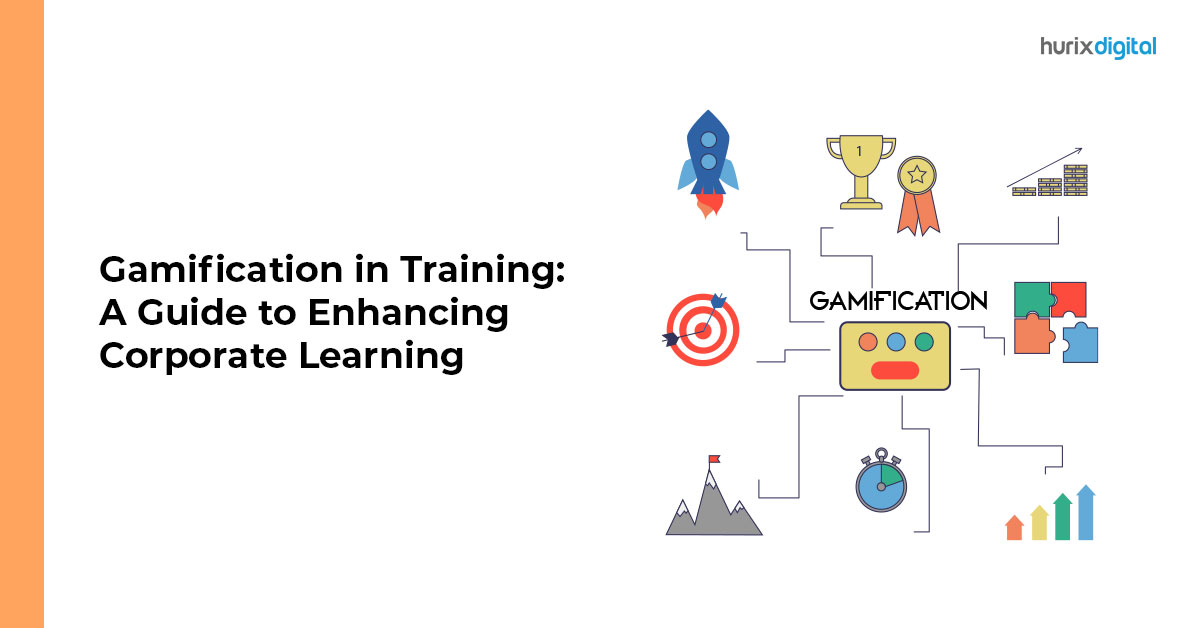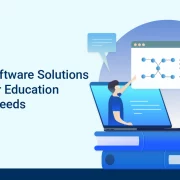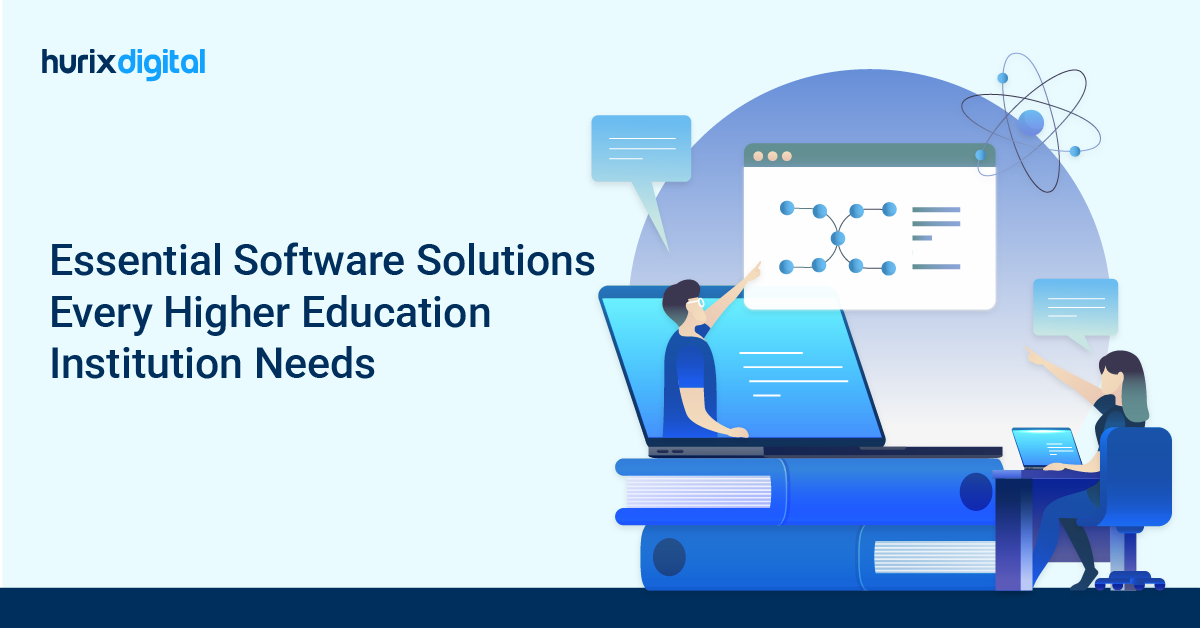
Essential Software Solutions Every Higher Education Institution Needs
Summary
This blog highlights seven essential software tools for higher education, streamlining operations, enhancing learning, and improving student management, emphasizing digital transformation’s importance in modern educational settings.
The world of education has become much more complex than it once was, and this change has only been exacerbated since the COVID-19 pandemic. Today, all operations—administrative, course management, attendance, performance tracking, and more—are rarely performed online using dedicated tools.
However, suppose you’re just starting or considering a complete shift to digital learning solutions. In that case, you must understand the various options available to you in the market today, what they’re meant for, the benefits they offer, and how they can streamline your institute’s operations.
This guide takes you through some must-have software solutions for higher education. Read on!
Table of Contents:
- What is Simulation Technology in Education?
- How Can Simulation Software for Education Help Students?
- Seven Must-Have Software Solutions for Higher Education Institutions
- Ongoing Trends in the Simulation Software Industry
- Takeaway
What is Simulation Technology in Education?
A uniquely developed animated model that mimics a real-world setting is known as simulation. This model allows students to experience various real-world scenarios.
Simulation in education is an attempt to integrate fieldwork and coursework better. A simulation program might be built based on hypothetical events to learn how a system operates.
These kinds of programs allow the students to alter the variables in the given virtual setting to research how the variables affect the steps in the process. Simulation enables students to become proficient in their jobs or talents without taking any chances.
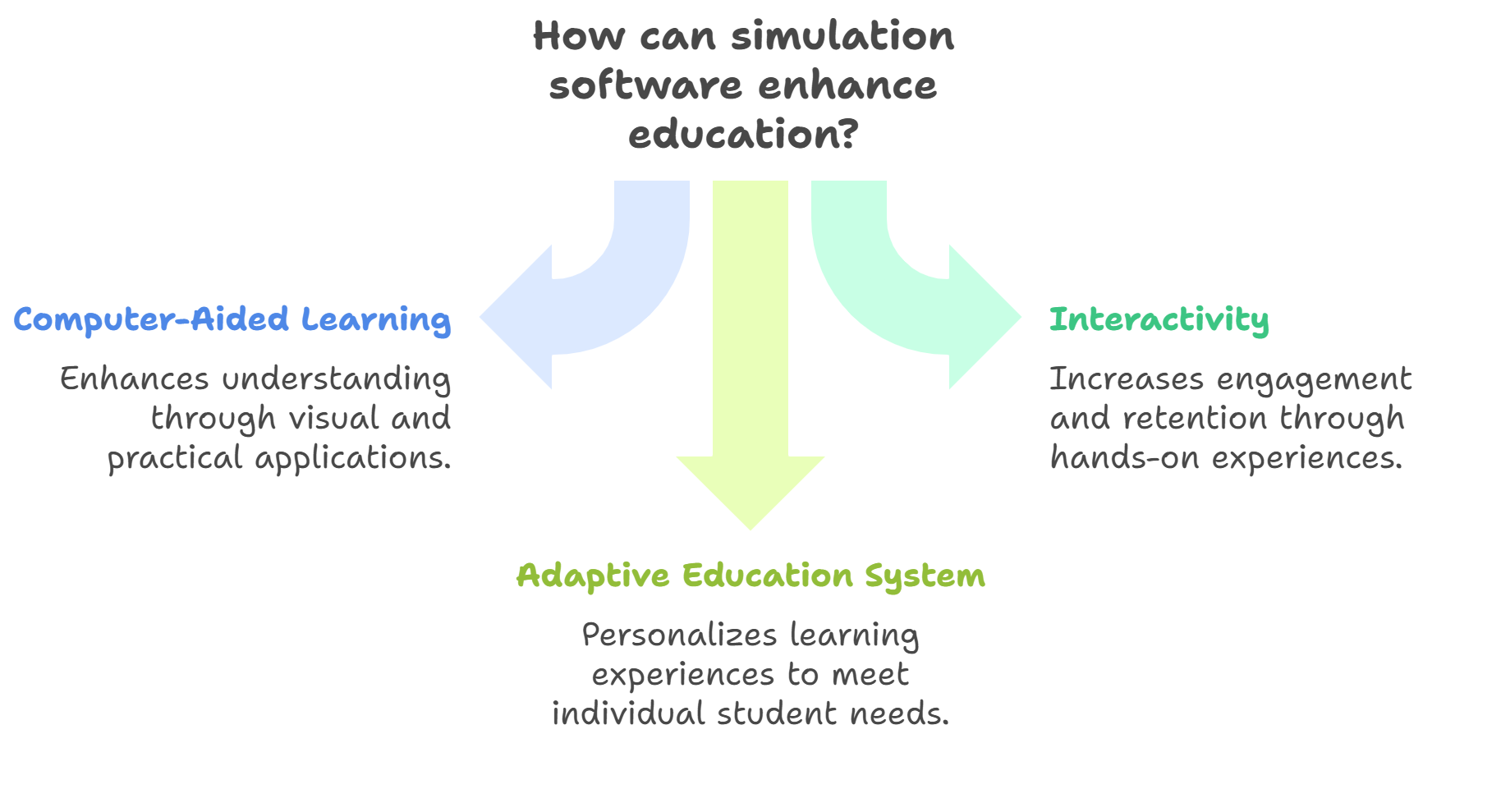
How Can Simulation Software for Education Help Students?
Simulation software for education makes learning possible through the realistic application of knowledge in a controlled setting. It supports students’ theoretical and empirical investigations.
Here are some key benefits of online learning simulations for students.
1. Computer-Aided Learning
Simulations are a computational learning tool that lets students apply their theoretical knowledge to real-world issues or learning settings while observing the results without suffering any actual loss.
Simulation software offers students a digital representation of a system that they may analyze rather than describing the real procedures in words.
2. Interactivity
Simulator software tools and real-world games are used in simulated learning environments to enhance instruction and learning methods.
The next generation of students finds simulations more engaging because they include cutting-edge approaches made possible by several technological advancements.
Because they are technologically sophisticated, students of Generation Z prefer to learn using simulation software for education to improve their learning.
3. System of Adaptive Education
When most students enter the workforce, they typically discover that their theoretical knowledge is insufficient to handle difficulties in everyday life. To develop the needed skills, they must amass work experience.
Online learning simulations allow students to interact with real-world systems or business situations. In contrast to traditional classroom instruction, they can handle simulated challenges and apply their knowledge to produce the desired results.
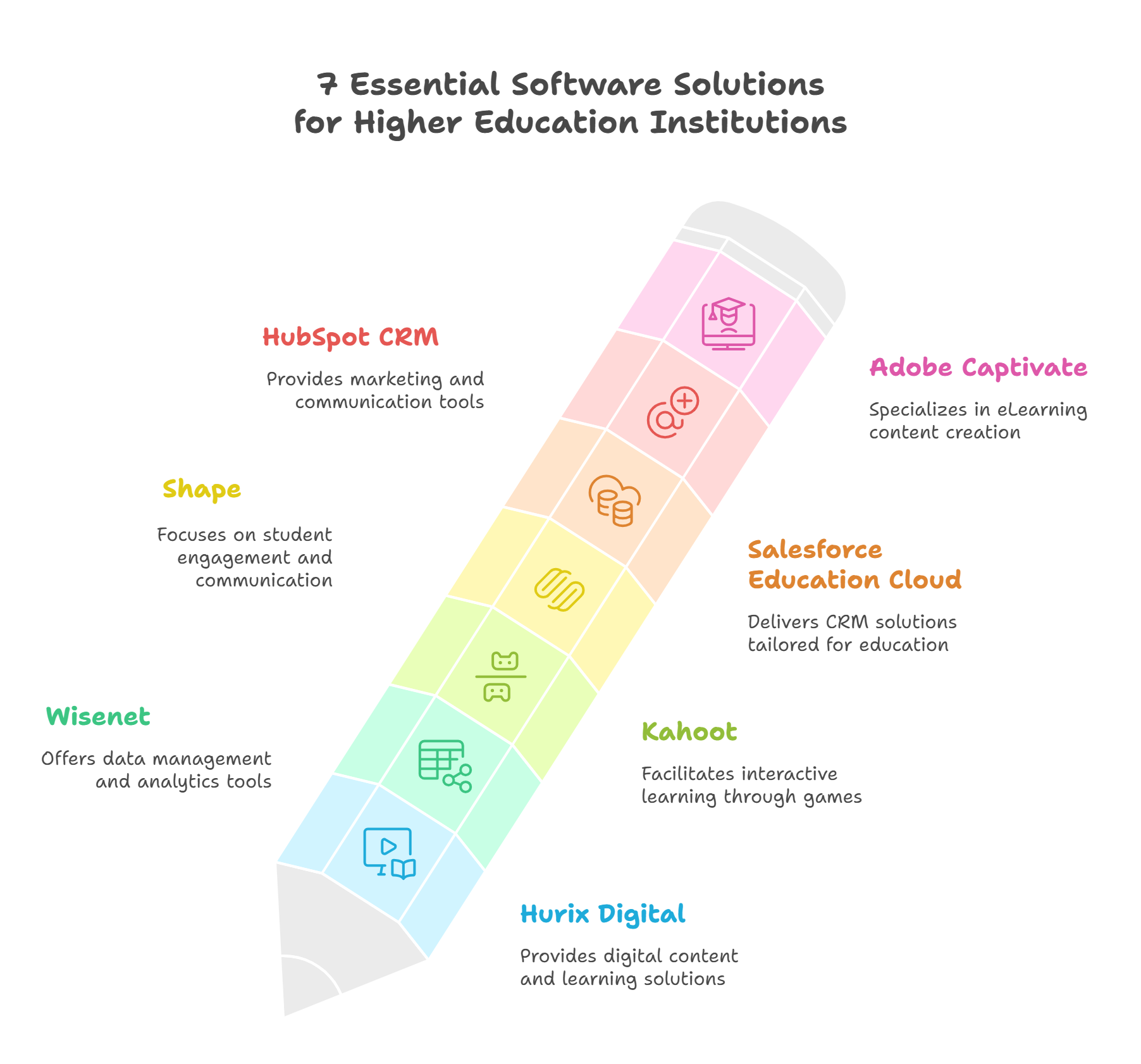
Seven Must-Have Software Solutions for Higher Education Institutions
Below are seven of the best software solutions for higher education you can consider using if you run a higher education institution:
1. Hurix Digital
The first on this list of the best edTech solutions is Hurix Digital, which offers a host of different content development programs for higher education institutions.
With a key focus on Competency-Based Education, the company offers flexible learning solutions that tick all the right boxes to personalize the learning experience.
Some of the key elements of Hurix Digital’s services include Video as a Service, scenario-based learning, gamification, micro-learning, and a story-based approach. Video-based learning has proven to be one of the most effective means of instruction, so the company designs its programs to help bring concepts to life through videos.
The company has also been at the forefront of designing some of the best custom Learning Management Systems (LMS). With an affordable and scalable approach, the company offers all the features one could need to meet their instructional requirements.
2. Wisenet
Another brilliant tool that has gained immense popularity in the higher education space is Wisenet. It combines multiple applications, allowing higher education institutions to manage all their learner data in a single, intuitive CRM.
The key benefit of this is that institutions no longer need to juggle between multiple software to perform different operations – Wisenet offers a one-stop shop for everything.
With over 20 years of experience in providing higher institutions with cloud-hosted learning and training solutions, it remains one of the most well-known players in the market today.
The tool can adjust to fluctuating enrollment numbers, changing internal processes, and much more. This allows institutions to manage all aspects of student data despite a sudden increase or decrease in enrollment.
Furthermore, the tool streamlines processes such as messaging and reporting, negating the need to perform these operations manually.
3. Kahoot
Kahoot is an LMS that aims to offer educational institutions various benefits, including streamlining learning management, providing learning through gamification and virtual sessions, tracking student performance, and much more.
Its gamification tools offer interactive learning with support for various questions, from multiple-choice to true-or-false statements. Further, it offers various collaboration tools while catering to other features, including blended learning, customizable questions and templates, communication management, learning management, PowerPoint integration, and more.
4. Shape
Shape is a full-cycle student management system that offers over 500 features to help higher education institutions streamline their workflows, facilitate seamless communication, and navigate fluctuations across a host of aspects with ease.
When it comes to streamlining communication, Shape offers web phone, text, and email automation. Further, it can easily integrate with your existing Student Information System (SIS), vastly improving its efficiency.
One of the key selling points of this software is its user interface, which offers seamless navigation at all times. Its ease of use helps instructors save time by not having to deal with multiple, complicated software for different operations. As a result of its API capabilities, you can seamlessly integrate any other platforms your institute may be using and operate them via a single, unified interface.
5. Salesforce Education Cloud
Salesforce, founded in 1999, is one of the most prominent leaders in Customer Relationship Management. With various marketing tools, Salesforce Education Cloud offers support for the entire student lifecycle and can help attract prospective students through its lead management system.
Built on Salesforce’s well-known platform, this educational technology offers immense potential for scalability, ensuring continued success no matter how much an institution expands. It also offers a complete overview of each student’s progress, ensuring a personalized learning experience.
What’s more, being a Salesforce product, you never have to worry about its customer support. Add to this the fact that this tool seamlessly integrates with some of the best LMS in the market, and you get the benefit of managing every aspect of the educational experience from one place.
6. HubSpot CRM
Last but not least, we have HubSpot, which is well-known in the SaaS industry. Its intuitive interface and inbound marketing tools offer one of the best platforms for tracking student interactions and engagement.
This is one of the best tools for managing student interactions and relationships in real-time. As a result, it can play a key role in improving enrollment numbers and ensuring improved engagement. What makes this tool even more versatile is its ability to seamlessly integrate with tools like spreadsheets, Dropbox Sign, and more, making it easily integrate with your existing tech stack.
Add to this the fact that it can also seamlessly integrate with any major LMS via Zapier integration, and its utility in the higher education sector becomes unparalleled.
7. Adobe Captivate
In the category of simulation software for students, Adobe Captivate is a well-liked choice that provides a wide range of capabilities. For your students to repeat, the software simulation function works like a screen recorder by capturing and playing back actions.
During the recording, it records by itself all of your mouse motions, clicks, and panel decisions.
Captivate easily handles images and movies from your 360° media files. This capability can be used to construct VR training settings and capture your learners’ attention. This functionality produces real-time previews of your simulations from the users’ perspective. This preview can help you get better results and iron out any bugs.
Including overlay slides in your videos can make your educational material more interesting. The 2019 update also included the feature of applying several overlays at one particular moment in the video. This makes it simpler to express your views and explain video footage.
Ongoing Trends in the Simulation Software Industry
The market for simulation software was assessed at USD 18.71 billion in 2022, and it is anticipated to rise at a CAGR of 13.6% from 2023 to 2030.
The software sector dominated the market in 2022, with the highest revenue share at approximately 69.9%. This indicates the rising popularity of cost-effective and time-saving simulation software.
Takeaway
The best teaching technique is to let your students “do” rather than instructing them on “how to do it.” By assuring the effective use of software solutions for higher education, multiple courses or teaching modules can be upgraded and made more appealing to the current cohort of students.
Running a higher education institute today involves much more technology than it once used to. However, the right tools can help streamline all operations and save time, resources, and energy.
With a host of different higher education technology companies, choosing the right software for your needs can become challenging. However, always thoroughly research your options and book a demo to understand how each tool works.
If you are looking for the best hands-on experience with software solutions for higher education and how they can help your students, contact Hurix Digital. We at Hurix Digital help you prepare your students with online learning simulations having real-life scenarios and situations.
Get in touch with our expert team now!

Senior Vice President – Business Development
Over 25 years of experience in the edtech and workforce learning industry with strong skills in Business Development, Customer Relationship Management (CRM) and Strategy.



